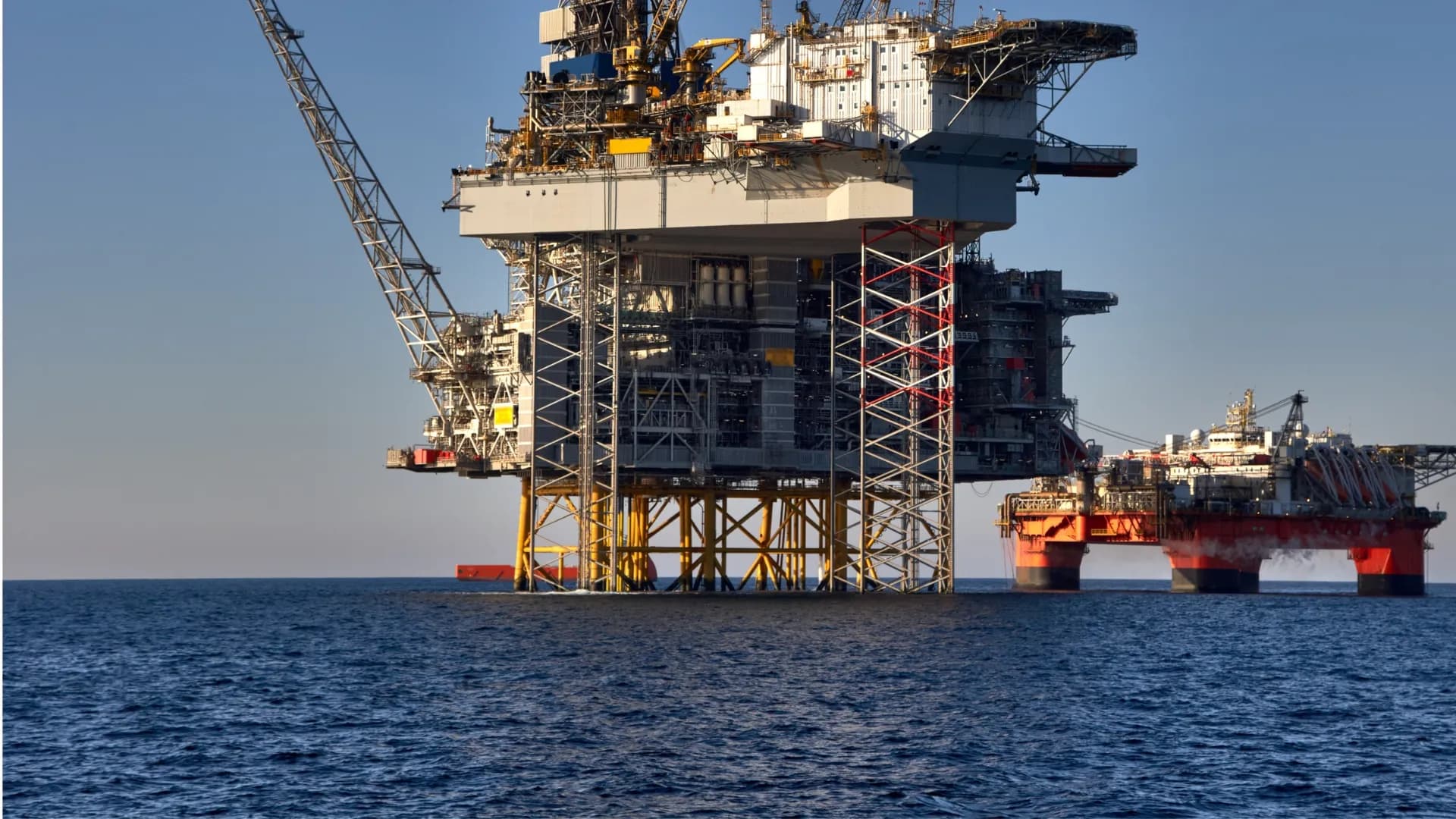Introduction to AI Visual Inspection
AI Visual Inspection is transforming the oil and gas industry by making inspections faster, safer, and more reliable. By combining artificial intelligence with computer vision, it can detect anomalies in pipelines, storage tanks, and refinery equipment with a level of accuracy and consistency that manual methods often lack. This shift not only improves efficiency but also reduces risks, helping companies prevent costly failures and maintain compliance with strict safety and environmental standards. As the industry embraces digital transformation, automated inspection technologies are becoming central to operations across upstream, midstream, and downstream sectors.
The oil and gas industry faces constant challenges in safety, compliance, and efficiency. AI Visual Inspection automates defect detection across pipelines, storage tanks, and refineries reducing downtime, ensuring compliance, and enabling predictive maintenance. In this blog, we’ll explore how AI-driven inspection is being applied in real-world scenarios, highlight success stories from leading companies, and look at the future trends shaping its role in the energy sector.
Unlock efficiency and safety with AI visual inspection for oil and gas pipelines and refineries
What Are the Three Sectors of the Oil and Gas Industry?
Oil and gas industry operations are divided into three interconnected sectors, each facing unique inspection challenges that AI Computer Vision can help address.
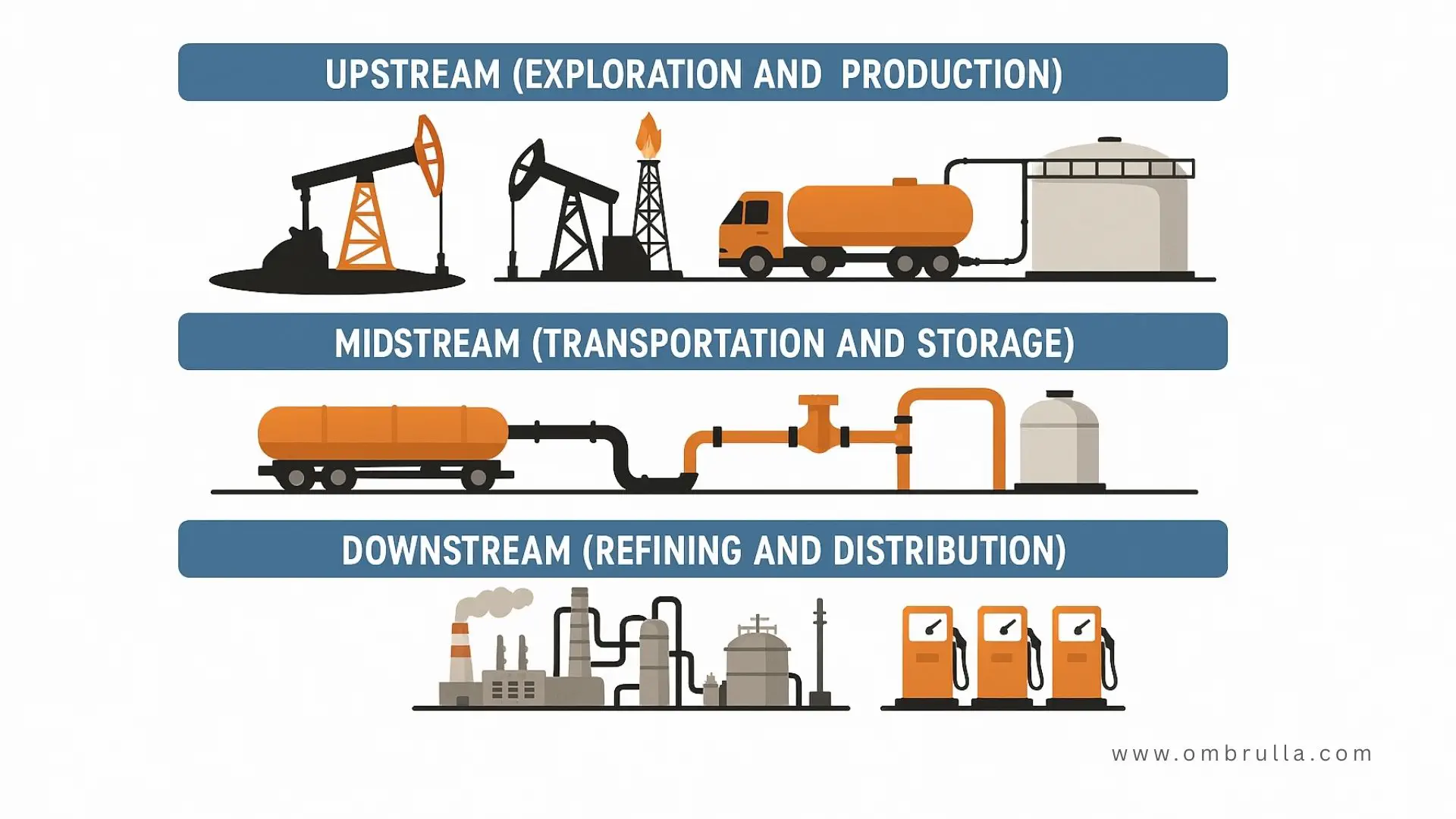
1. Upstream (Exploration and Production)
This sector involves searching for oil and gas reserves, drilling wells, and extracting hydrocarbons. Upstream operations often take place in remote and harsh environments such as deep seas and deserts. Key challenges include:
- •Equipment fatigue in drilling rigs.
- •Subsea pipeline corrosion.
- •Structural failures in offshore platforms.
Artificial Intelligence Visual Inspection is applied here through drones, subsea robots, and satellite imagery to detect cracks, leaks, and anomalies that could lead to costly downtime.
2. Midstream (Transportation and Storage)
This stage involves transporting crude oil and natural gas via pipelines, rail, ships, and storage facilities. Major risks include:
- •Pipeline corrosion and leaks.
- •Tanker integrity monitoring.
- •Storage tank degradation.
Automated Visual Inspection systems help detect small defects before they escalate into catastrophic failures. AI-powered drones can scan vast stretches of pipelines and detect anomalies in real-time.
3. Downstream (Refining and Distribution)
Here, crude oil is refined into usable products such as gasoline, diesel, and petrochemicals before being distributed. Risks include:
- •Equipment overheating.
- •Valve failures.
- •Quality control issues.
Through AI Quality Control and Defect Detection in Manufacturing principles, refineries maintain consistent product quality while reducing operational hazards driving the digital transformation in refinery inspections.
AI-powered inspections ensure reliability across oil and gas upstream, midstream, and downstream.
Optimising Oil and Gas Operations with Artificial Intelligence
The oil and gas industry faces constant pressure to reduce costs, improve safety, and meet sustainability targets. AI Visual Inspection provides a strategic solution by:
• Minimizing Downtime
Predictive maintenance powered by AI Defect Detection forecasts equipment failures before they occur.
• Improving Safety
Replacing human inspectors in high-risk environments with AI-enabled drones and robots.
• Cost Savings
Reducing manual inspection labor costs and avoiding expensive shutdowns.
• Operational Scalability
Monitoring thousands of kilometers of pipelines simultaneously using AI Inspection Systems.
• Environmental Protection
Detecting leaks early to prevent environmental disasters.
The result is an industry that operates more efficiently, with greater resilience against operational disruptions.
Reduce downtime and improve safety with AI defect detection for oil and gas equipment
Benefits of Using AI Visual Inspection in the Oil and Gas Industry
AI visual inspection for pipelines and refineries enables early corrosion detection, preventing leaks and environmental hazards while lowering repair costs. It also improves offshore rig safety monitoring with AI, ensures compliance with oil and gas regulations, and supports predictive maintenance that reduces downtime and extends asset lifespan.
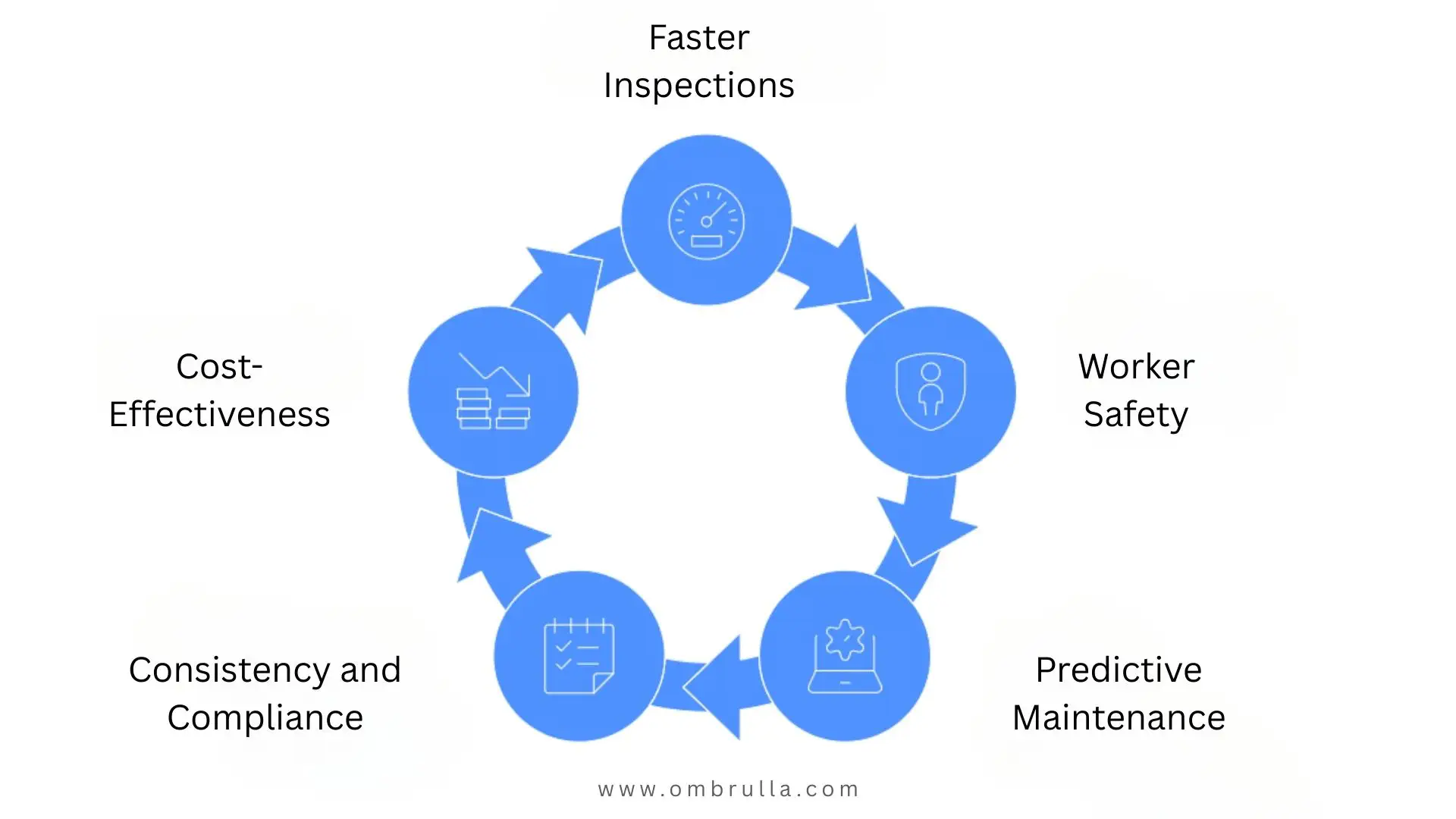
1. Enhanced Accuracy and Precision
AI-powered Visual Inspection AI can detect microscopic cracks, corrosion, or surface irregularities that human inspectors might miss.
2. Faster Inspections
Manual inspection of large offshore rigs or long pipelines can take weeks. With AI Computer Vision, inspections are automated and completed in hours.
3. Worker Safety
Automated Visual Inspection systems reduce human exposure to hazardous environments such as confined spaces, heights, or deep-sea platforms.
4. Predictive Maintenance
Using advanced algorithms, AI Quality Control predicts when equipment is likely to fail, allowing proactive maintenance instead of reactive repairs.
5. Consistency and Compliance
Unlike humans, AI systems provide consistent inspections without fatigue. This ensures compliance with regulatory frameworks and safety standards, making AI a key enabler of AI in oil and gas safety compliance.
6. Cost-Effectiveness
Although initial implementation costs are significant, the long-term savings from reduced downtime, fewer accidents, and optimized maintenance are substantial.
Achieve compliance and predictive maintenance with AI quality control for oil and gas operations
Artificial Intelligence Use Cases In Oil and Gas
The versatility of AI Inspection Systems makes them applicable across multiple use cases in the industry:
Pipeline Monitoring and Leak Detection
Preventing leaks through constant surveillance and enabling predictive maintenance with AI inspections in pipelines to reduce unplanned failures.
Offshore Platform Monitoring
AI-powered drones inspect hard-to-reach areas on rigs, detecting cracks, corrosion, and anomalies to enhance safety and reliability.
Refinery Equipment Inspections
AI-driven inspections ensure valves, turbines, and pumps remain defect-free, driving efficiency and enabling the digital transformation in refinery inspections.
Storage Tank Monitoring
AI visual inspection detects corrosion, rust, and cracks early, enabling predictive maintenance and extending asset lifecycles.
Worker Safety and PPE Compliance
AI systems monitor helmets, vests, and gloves in real time, ensuring safety protocols are followed and compliance reports are accurate.
Environmental Monitoring
AI visual inspection identifies spills and emissions instantly, helping operators prevent environmental damage and strengthen ESG compliance.
By applying Defect Detection in Manufacturing logic, oil and gas companies are adapting proven industrial techniques to their unique environments.
See real-world results with AI inspection solutions for pipelines, tanks, and refineries
Pipeline Corrosion Detection with Google Cloud AutoML Vision
Corrosion is one of the most persistent threats to pipeline integrity. Google’s AutoML Vision offers customizable solutions for AI Defect Detection in this area.
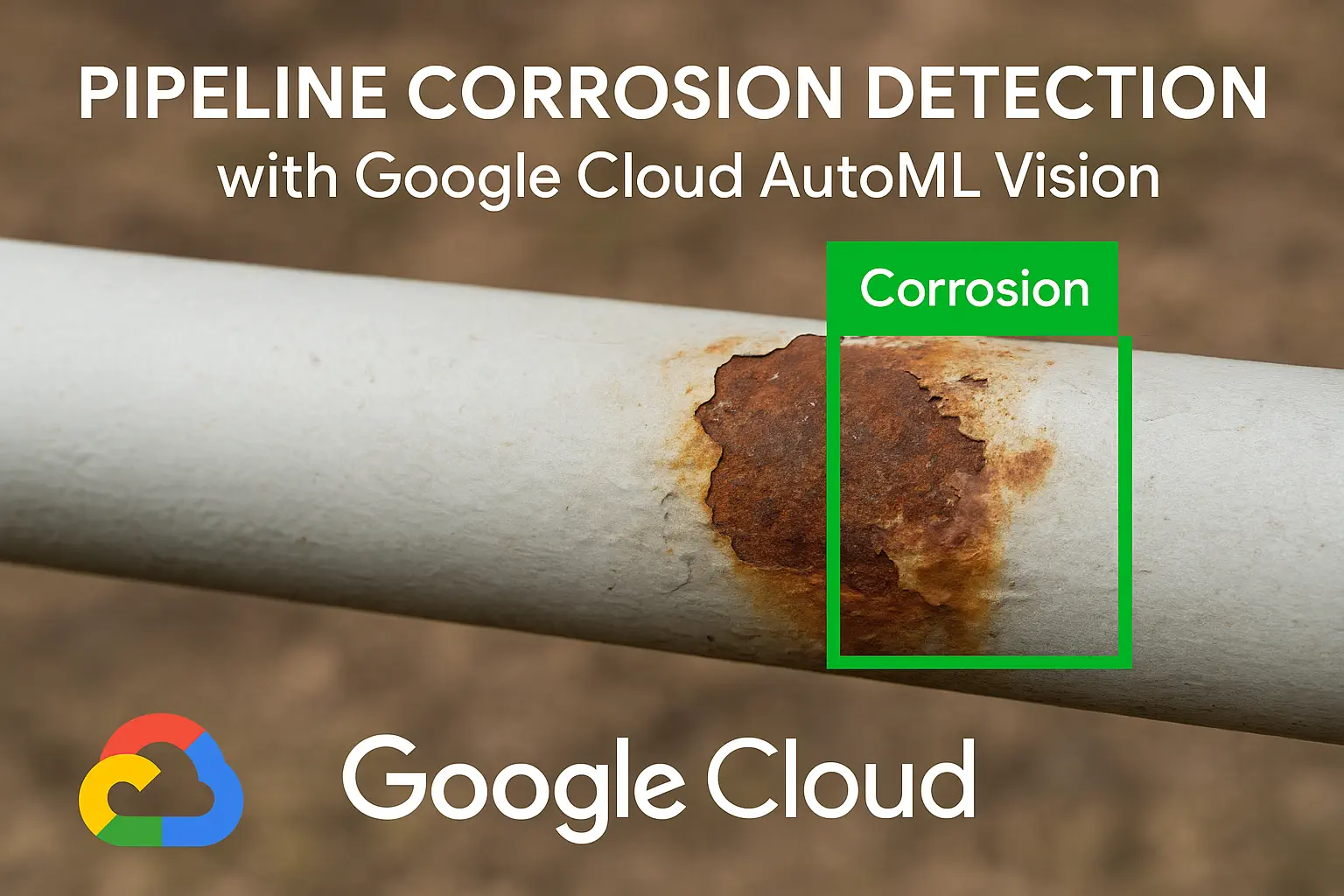
- •Models are trained with annotated corrosion images.
- •AI then identifies corrosion patches, cracks, or leaks in real-time.
- •AI Quality Control ensures inspection results are consistent across geographies.
This approach reduces the risk of catastrophic pipeline failures and lowers maintenance costs by detecting defects early.
Business Impact
Early pipeline corrosion detection reduces failure risks, prevents environmental damage, and lowers maintenance costs ensuring compliance and business continuity.
Detecting Storage Tanks Using Amazon SageMaker
Storage tanks hold millions of barrels of crude oil and refined products, making them critical to operations. Amazon SageMaker provides:
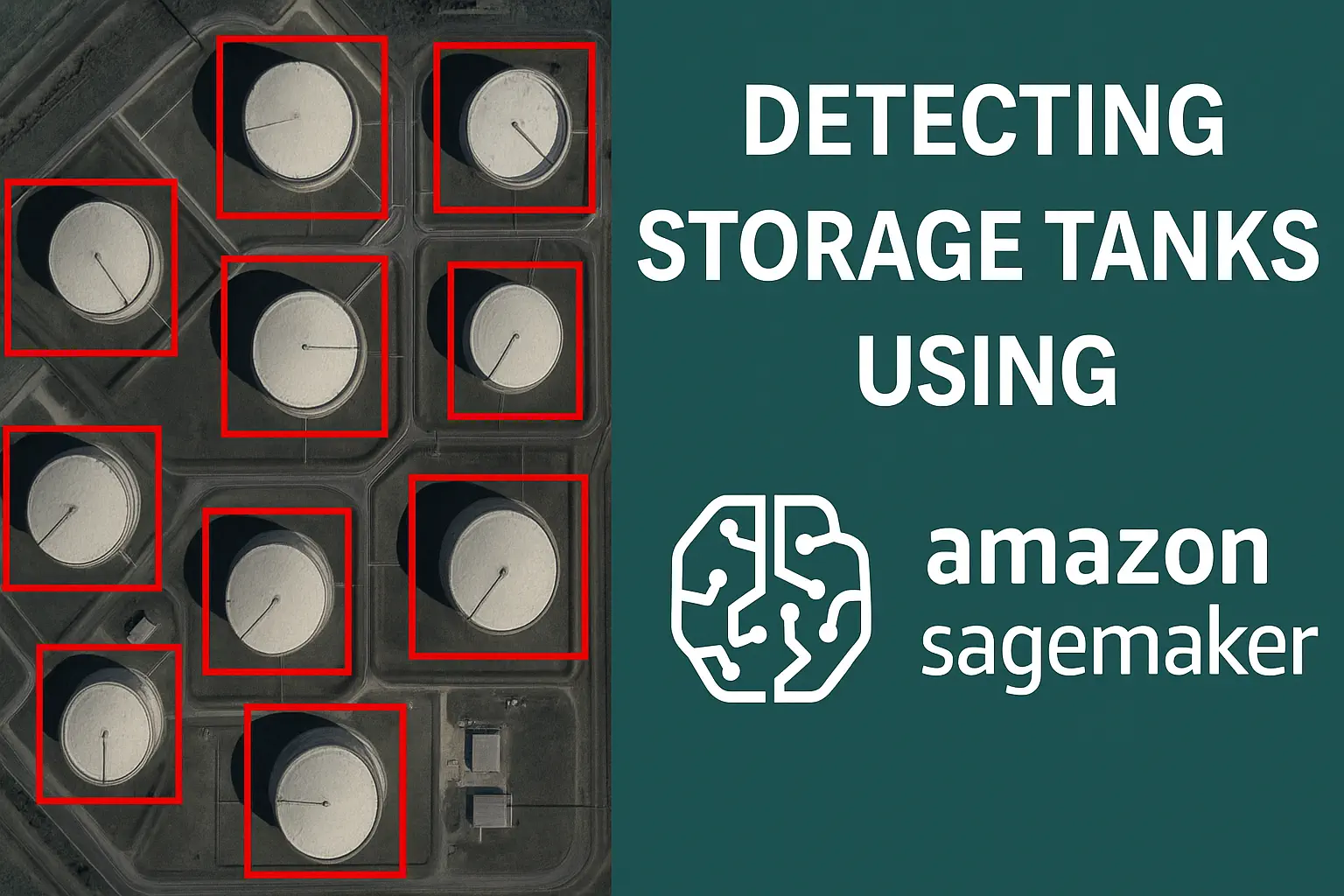
- •Machine Vision Inspection models that analyze drone or satellite images.
- •Real-time alerts when anomalies such as rust, cracks, or leaks are detected.
- •Automated retraining of models to improve accuracy over time.
By leveraging cloud-based AI, companies gain scalable, reliable monitoring of vital assets.
Business Impact
Cloud-based AI tank monitoring enables predictive maintenance, reducing downtime while ensuring safety and compliance for critical storage assets.
PPE Detection with Microsoft Azure Custom Vision
Worker safety remains a top priority in oil and gas operations. Microsoft Azure Custom Vision provides a robust AI Inspection System for PPE monitoring:
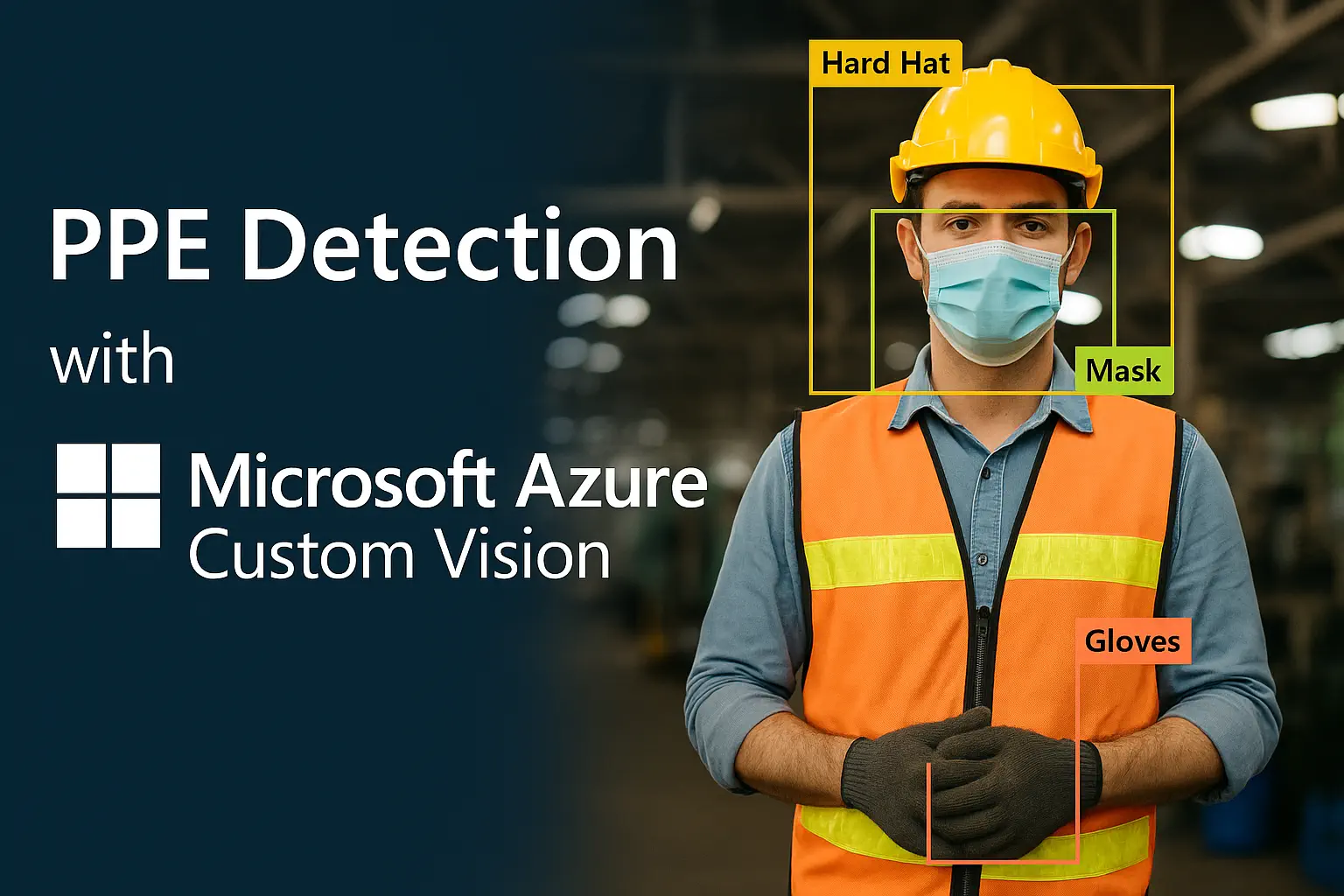
- •AI models detect helmets, safety vests, gloves, and goggles.
- •Real-time alerts reduce workplace violations.
- •Historical data ensures compliance reporting is accurate.
This automated compliance check reinforces a proactive safety culture across worksites.
Business Impact
Automating PPE compliance reduces workplace accidents, strengthens safety culture, and lowers liability risks helping leaders safeguard their workforce and reputation.
Leverage cloud AI for pipeline and storage tank visual inspection in oil and gas
AI Visual Inspection: Industry Success Stories
Artificial Intelligence is revolutionizing visual inspection across industries, particularly in the energy sector where safety, efficiency, and reliability are paramount. Leading companies such as ExxonMobil, Chevron, and Shell have successfully adopted AI-driven solutions to enhance operational performance and reduce risks. From predictive maintenance to pipeline surveillance and storage tank monitoring, these organizations showcase how AI-powered visual inspection is transforming traditional practices into smarter, data-driven operations.
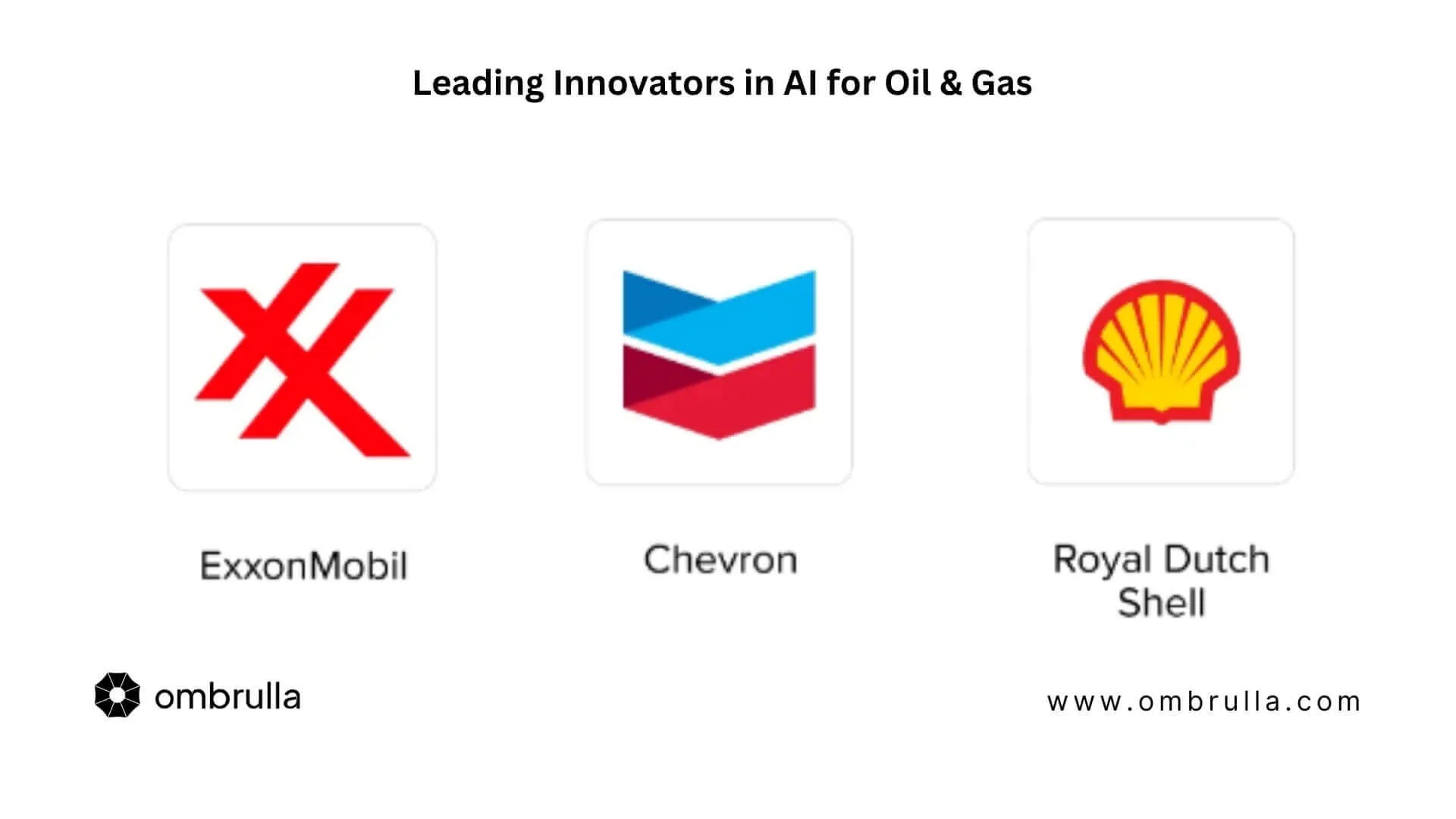
ExxonMobil: AI-Driven Predictive Maintenance
ExxonMobil has integrated AI Defect Detection across its offshore rigs. The system monitors drilling equipment, turbines, and pumps to detect fatigue or cracks. As a result:
- •Equipment downtime was reduced.
- •Maintenance costs decreased significantly.
- •Operational reliability improved.
Chevron: AI for Pipeline Surveillance
Chevron adopted AI Computer Vision systems to inspect pipelines spanning thousands of kilometers. The system continuously monitors for leaks, corrosion, and unauthorized interference. As a result:
- •Pipeline integrity and safety were enhanced.
- •Millions were saved by preventing potential disasters.
- •Inspection coverage expanded without increasing manpower.
Shell: AI in Storage Tank Monitoring
Shell leverages drones combined with Automated Visual Inspection to monitor storage tanks. AI models analyze tank surfaces for cracks and rust, delivering higher accuracy in less time. As a result:
- •Inspection time was reduced by 70%.
- •Defect detection accuracy increased significantly.
- •Worker safety improved by minimizing manual inspections.
Join leaders like ExxonMobil and Shell with AI-driven inspection technology for oil and gas companies
Major Challenges in Implementing AI Visual Inspection in Oil and Gas
While the benefits are clear, organizations face several barriers to full adoption:
• Data Limitations
AI models require vast annotated datasets, which may not be readily available.
• Integration with Legacy Systems
Upgrading old infrastructure can be costly and complex.
• Skill Gaps
Employees need training in AI and Computer Vision systems.
• Cybersecurity Risks
Increased connectivity raises the risk of cyberattacks.
• Regulatory Complexity
Differing standards across regions slow down implementation.
Addressing these challenges requires collaboration between technology providers, regulators, and oil and gas operators.
Overcome adoption barriers with tailored AI inspection solutions for oil and gas enterprises
The Future of AI Visual Inspection in Oil and Gas: Trends and Sustainability
Looking ahead, AI Visual Inspection will evolve alongside advancements in AI and IoT. Key trends include:
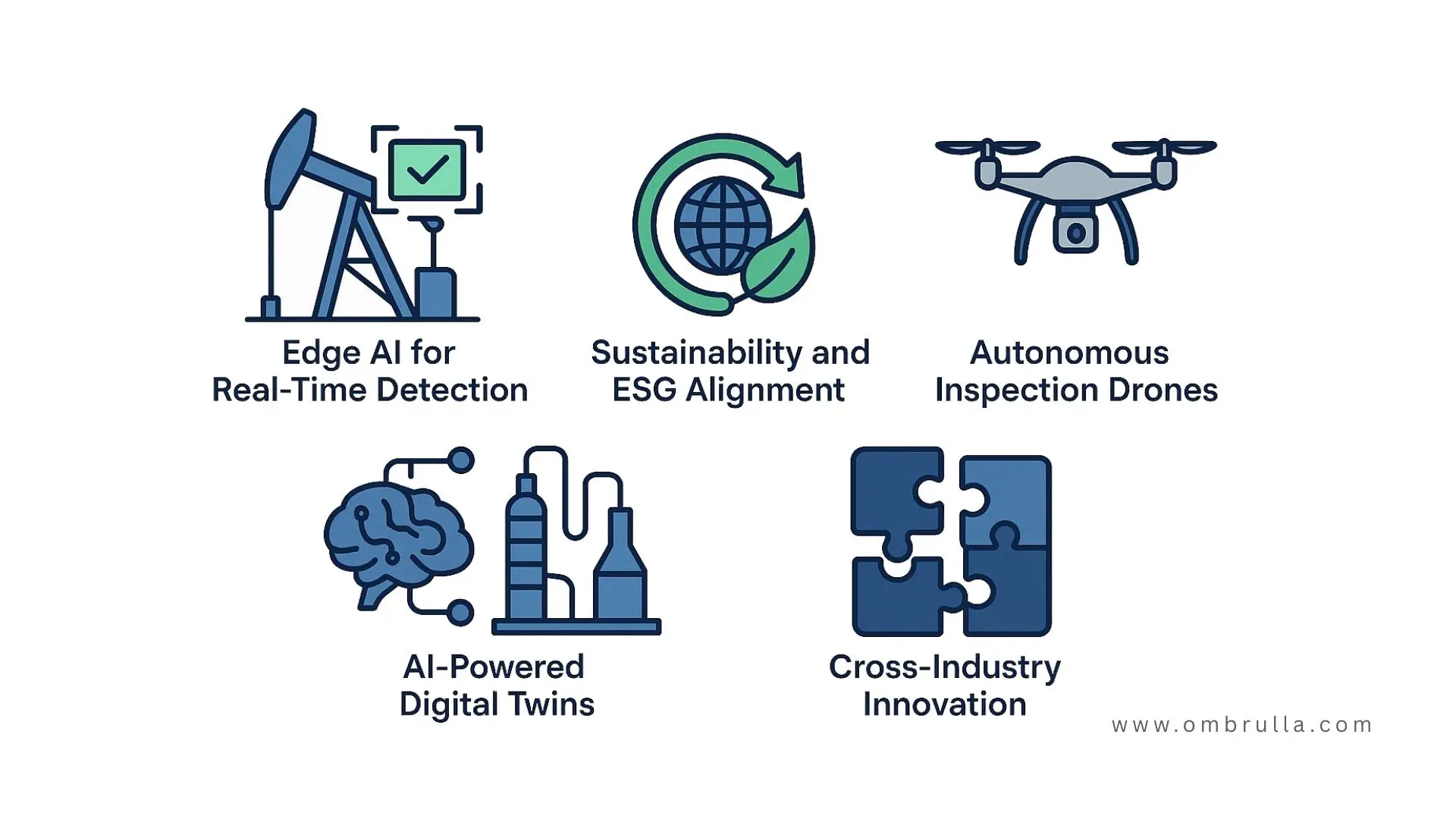
Edge AI for Real-Time Detection
Low-latency detection on devices deployed at inspection sites.
Sustainability and ESG Alignment
AI-powered Quality Control minimizes leaks and emissions, aligning with global sustainability goals.
Autonomous Inspection Drones
Next-generation drones will independently inspect offshore rigs, reducing human involvement further.
AI-Powered Digital Twins
Creating digital twin replicas of assets for predictive maintenance and risk simulation.
Cross-Industry Innovation
Lessons from Defect Detection in Manufacturing will continue to shape AI inspection systems for oil and gas.
Future-proof your operations with predictive AI inspection and digital twin technology in oil and gas
AI Visual Inspection in Oil and Gas: Frequently Asked Questions
AI Visual Inspection uses Artificial Intelligence (AI) and Computer Vision to monitor pipelines, rigs, refineries, and storage tanks. It automatically detects cracks, corrosion, and leaks, reducing manual inspection needs and improving compliance.
By deploying drones, robotics, and AI-powered cameras, inspections in hazardous or hard-to-reach areas can be automated. This minimizes worker exposure to dangerous conditions and lowers accident risks while ensuring accurate assessments.
Yes. AI defect detection applies predictive analytics to identify early warning signs of wear, corrosion, or leaks. This supports predictive maintenance, preventing costly breakdowns and extending equipment life.
Initial investment in AI Quality Control can be high, but long-term benefits include reduced downtime, fewer accidents, extended asset lifespan, and regulatory compliance. The return on investment (ROI) often outweighs the upfront costs.
Yes. With cloud-based AI inspection platforms, companies can monitor global assets in real-time. This ensures consistent inspection standards, faster decision-making, and optimized operations across multiple sites worldwide.
Drones equipped with AI-powered cameras provide aerial views of pipelines, offshore rigs, and storage tanks. They enable faster, safer, and more detailed inspections, especially in remote or hazardous environments.
Real-time anomaly detection uses AI algorithms and IoT sensors to instantly identify irregularities such as pressure changes, gas leaks, or surface defects. This allows immediate corrective actions, reducing safety and environmental risks.
AI-powered inspection systems generate accurate, time-stamped digital reports that align with industry standards and government regulations. This ensures audit readiness, traceability, and compliance while minimizing human error.
Conclusion
The oil and gas industry is entering a new era of efficiency and safety. Traditional inspection methods, while once effective, can no longer keep pace with the scale and complexity of modern operations. AI Visual Inspection in the Oil and Gas Industry is reshaping how companies monitor assets, protect workers, and stay compliant by enabling faster, more accurate, and more reliable inspections.
From exploration to refining, this technology is setting new benchmarks for reliability and sustainability. Organizations that embrace AI Visual Inspection in the Oil and Gas Industry will be positioned to lead the way toward a safer, smarter, and more efficient future.
Lead the energy sector transformation with AI visual inspection for oil and gas safety and compliance
